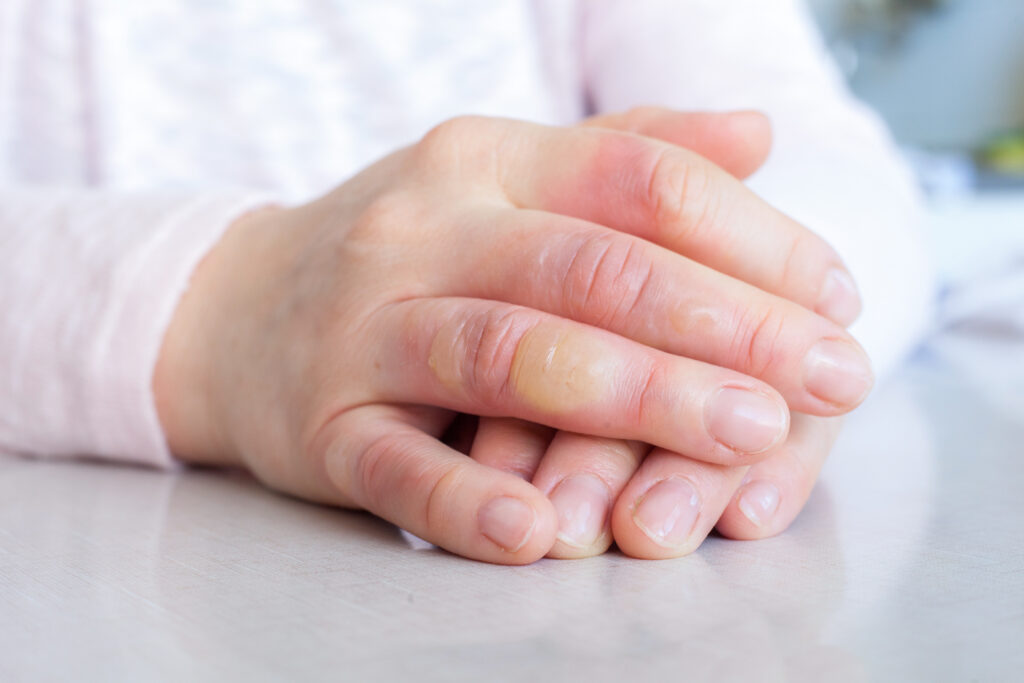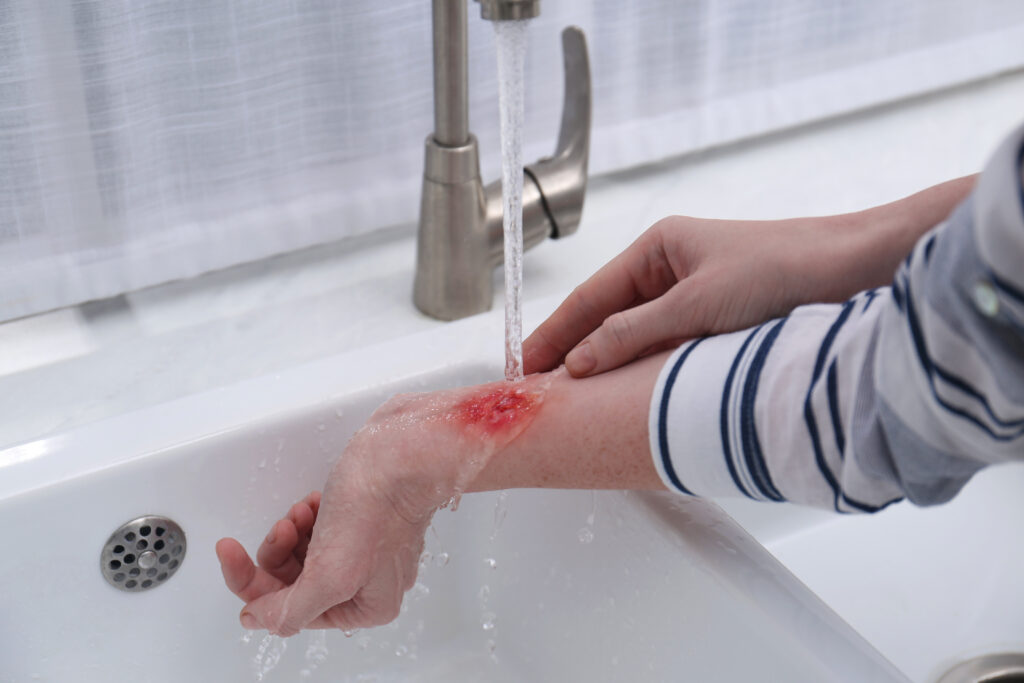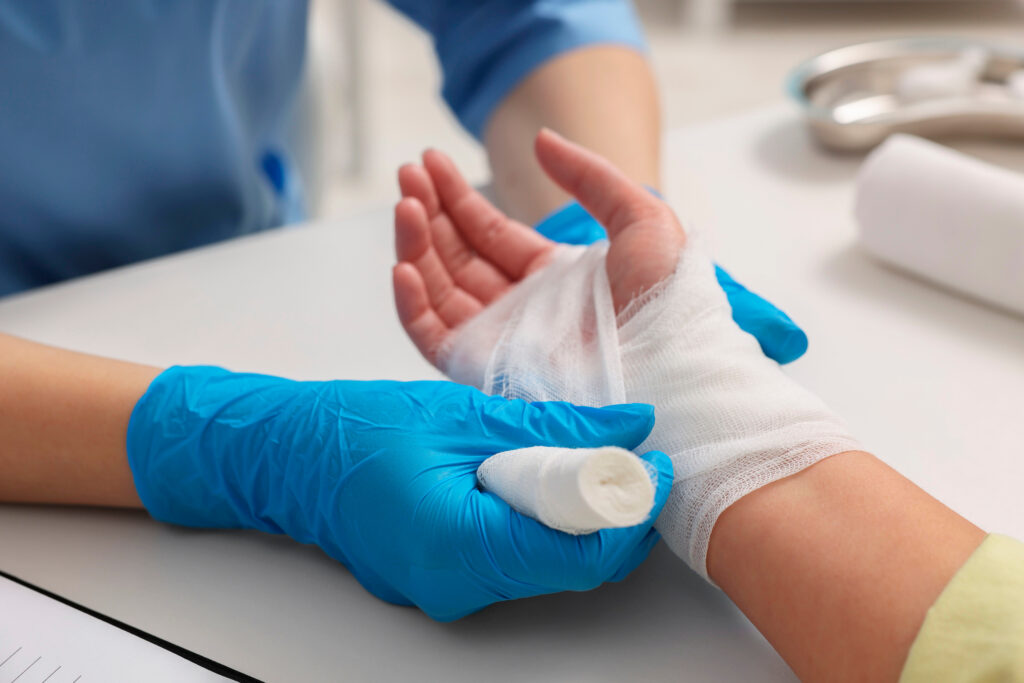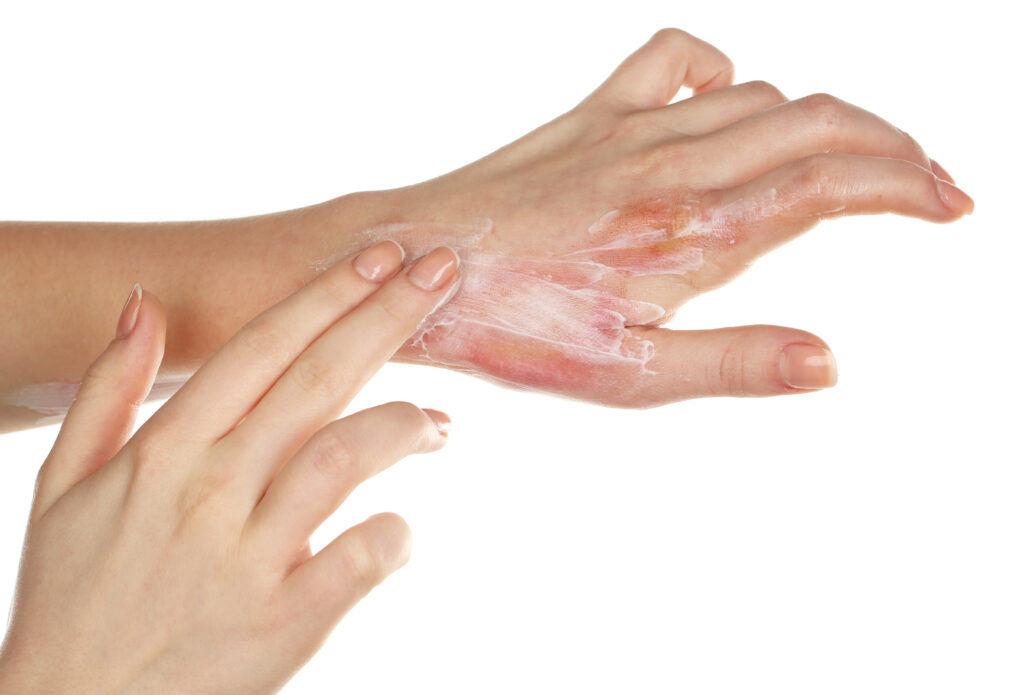First aid for burns caused by hot glue: tips and measures

Hot glue guns and hot-melt adhesives are useful – who would know that better than us. BUT they are, as their name suggests: „Hot“.
Injuries sometimes occur in everyday working life. The hot-melt adhesive reaches temperatures of around 200 degrees Celsius and often causes first degree burns when it comes into contact with the skin. Here are some recommendations on how to deal with such a burn:
First aid measures
Avoid skin contact: Avoid touching the hot adhesive directly. The instinctive attempt to peel off the adhesive often results in the adhesive spreading further onto the skin and potentially causing even larger burns.
Immediate cooling: Immediately hold the burnt area under lukewarm running water for at least 10-15 minutes. This will reduce the heat and soothe the skin. Do not use cold or ice-cold water as this can cause further damage to the skin.
Do not use ice or a cold pack: Do not use ice or very cold water as this can further damage the skin. Instead, use lukewarm water for cooling.

Removing adhesive residue: Only remove adhesive residue if it comes off easily. Do not try to remove the adhesive forcibly. If the adhesive adheres/sticks firmly to the skin, seek medical attention.
Covering the injury: After the adhesive has hardened, cover the burnt area with a clean, non-adhesive bandage or cloth, in order to prevent infection. Change the bandage regularly and watch for any signs of infection

Medical attention: Seek medical attention, especially if the burn is extensive, blistered, or if there are significant changes to the skin. Burn blisters are second-degree burns that are very painful but will heal completely. Second-degree burns can occur if the glue gun nozzle touches the skin for several seconds or if the glue sticks to the skin for a longer period
of time. However, the glue drops usually cool down quickly.
Additional tips for those affected
Pain management: If the pain is severe, over-the-counter painkillers such as Ibuprofen or Paracetamol can be taken to relieve the symptoms. Follow the dosage instructions and consult a doctor if you are unsure.
Aftercare: Observe the burnt area over the next few days for signs of infection such as redness, swelling, pus, or persistent pain. Avoid opening the blisters, as this increases the risk of infection.

Long-term skin care: Once the burn has healed, moisturise the skin with
moisturising creams or lotions to minimise dryness and scarring. Protect the
affected area of skin from direct sunlight to prevent hyperpigmentation.
Prevention: Always wear protective gloves when working with a hot glue gun and ensure that the work surface is kept safe and free of flammable material. Keep the hot glue gun away from children and make sure to store it away safely after use.
By following these steps, you can effectively treat hot glue burns and prevent possible complications. Take good care of yourself and always be careful when using the application equipment.
- Our YouTube channel – knowledge to view - 6. Mai 2025
- Efficient adhesive supply with the granulate conveyor: How to optimise your production: - 15. April 2025
- Blocked hot-melt adhesive granules – causes, effects and solutions - 11. März 2025